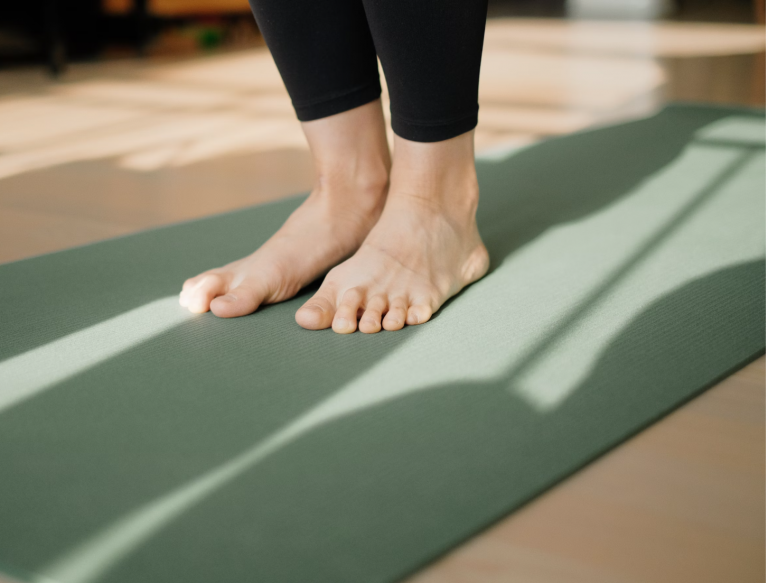Waking up with stiff muscles or sluggish energy is something many of us experience. A quick 10-minute stretch can completely change how your day begins. Morning stretching isn’t just about flexibility; it’s a daily investment in both your physical and mental wellbeing.

The Science Behind Morning Movement
When you sleep, your body is mostly motionless for 6–8 hours. That stillness can cause joints to feel tight and muscles to shorten. Morning stretching increases blood flow, warms up your muscles, and helps lubricate joints, all of which are crucial for movement and injury prevention.
Physical and Mental Benefits
Stretching releases tension built up during sleep, realigns your posture, and even wakes up your nervous system. Mentally, it gives you a grounded and intentional start—like pressing a reset button before the chaos of the day begins.
Preparing for Your Morning Routine
Create a Calm Space
Find a quiet, uncluttered corner of your home. You don’t need much space, just enough for a yoga mat or towel.
Use a Mat or Comfortable Surface
A good mat cushions your joints, especially for floor stretches. Avoid hard or cold surfaces.
Listen to Your Body
Stretching should feel good—not painful. If you feel a sharp pull or pain, ease off. Think of it like tuning an instrument, not snapping a string.
The 10-Minute Stretch Routine Breakdown
Minute 1: Neck Rolls
Gently roll your neck clockwise for 30 seconds, then counterclockwise. Keep your shoulders relaxed. This helps release tension stored from sleep and poor posture.
Minute 2: Shoulder Rolls and Arm Circles
Roll your shoulders backward and forward. Then make small and large circles with your arms. This energizes your upper body and preps your joints for the day.
Minute 3: Standing Side Stretch
Raise one arm overhead and lean to the opposite side. Hold for 15 seconds on each side. This stretches the intercostal muscles and promotes spinal mobility.
Minute 4: Forward Fold
Stand tall and hinge at your hips to reach toward your toes. Let your head hang. This decompresses the spine and stretches the hamstrings.
Minute 5: Cat-Cow Stretch
On all fours, alternate between arching and rounding your back. Sync each movement with your breath. This wakes up your spine and core.
Minute 6: Seated Spinal Twist
Sit cross-legged, place one hand on the opposite knee, and gently twist your torso. Hold for 20 seconds each side. This targets spinal mobility and digestion.
Minute 7: Hamstring Stretch
Sit with legs extended, reach forward without rounding your spine. Hold gently. Flex your feet for added b
Minute 8: Hip Flexor Stretch
Lunge forward with one leg while keeping the other knee on the ground. Lean slightly forward. Switch sides after 30 seconds.
Minute 9: Child’s Pose
Sit back on your heels with arms extended forward. Breathe deeply. This pose calms the mind and gently stretches the back.
Minute 10: Deep Breathing and Mindfulness
End your routine by lying or sitting in stillness. Inhale deeply through your nose, exhale through your mouth. Focus on gratitude and intention.
Key Tips for Success
Be Consistent
Doing it every day—even just 5 days a week—produces noticeable results in energy and mood. Think of it like brushing your teeth for your muscles.
Modify to Your Needs
Not every stretch suits every body. Feel free to adjust or replace any stretch with alternatives that target the same area more comfortably.
Stay Hydrated
Hydration supports flexibility. A glass of water post-stretch helps flush out toxins and wake up your organs.
Common Mistakes to Avoid
Rushing Through the Stretches
It’s tempting to check off the stretches quickly, but each move needs presence. Speed negates the benefits.
Ignoring Pain Signals
Stretching should not hurt. If it does, you’re either pushing too hard or need a different stretch.
Skipping Breath Control
Breath is your tool for deeper release. Inhale to prepare, exhale to relax further into each stretch.
Long-Term Impact of a Morning Stretch Routine
Improved Flexibility and Posture
Consistent stretching opens up tight muscles, aligns your posture, and makes daily tasks easier.
Reduced Stress and Anxiety
Stretching slows your breathing and heart rate, activating the parasympathetic nervous system—the body’s “rest and digest” mode.
Enhanced Energy and Focus
Instead of relying solely on caffeine, stretching offers a natural wake-up call to your entire system.
Conclusion
A 10-minute stretch in the morning may seem insignificant, but its cumulative effect is profound. It’s not just a routine—it’s a form of self-respect. You’re telling your body and mind, “I care about how we start today.” So roll out that mat, take a breath, and give yourself these ten minutes. Your future self will thank you.
FAQs
1. Can I stretch right after waking up, or should I wait?
You can start right away, but moving gently is key. If you feel stiff, give yourself a few minutes to wake up fully before starting.
2. What if I miss a day—should I double up?
No need. Just resume the next day. Stretching works best with consistency, not intensity.
3. Can I do this routine before a workout?
Yes, but consider adding more dynamic movements if you’re preparing for high-intensity exercise.
4. Do I need to warm up before stretching?
If you’re stretching gently, your body warms itself up. But a few jumping jacks or deep breaths can help.
5. Will this routine help with back pain?
Yes, especially the spinal and hamstring stretches. Just be cautious and consult a professional if you have existing injuries.






